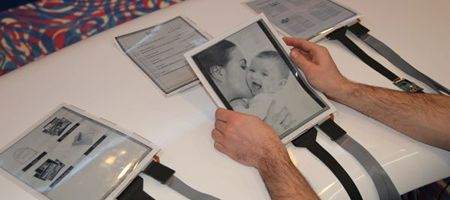The bendy tablet has been coming for quite a while now, but a version to be shown off today at CES could be ready for the market within three years, say its creators.

The PaperTab tablet, developed at Queen’s University in collaboration with Plastic Logic and Intel Labs, looks and feels pretty much like a sheet of paper. It has a flexible, high-resolution 10.7-inch plastic display developed by Plastic Logic, a flexible touchscreen, and is powered by the second-generation Intel Core i5 Processor.
Unlike a standard tablet, though, users won’t be able to do everything they need on a single device. Instead, they’ll need ten or more PaperTabs, one per app in use. It’s not yet clear quite how practical this will be, as there’s no indication how much each one will cost.
“Using several PaperTabs makes it much easier to work with multiple documents,” says Roel Vertegaal, director of Queen’s University’s Human Media Lab. “Within five to ten years, most computers, from ultra-notebooks to tablets, will look and feel just like these sheets of printed color paper.”
Unlike traditional tablets, PaperTabs keep track of their location relative to each other and the user.
This makes for some clever ways of doing things. For example, when a PaperTab is placed outside reaching distance, it reverts to a thumbnail overview of a document, just like icons on a computer desktop. When picked up or touched, though, switches back to a full screen page view, just like opening a window on a computer.
A user can send a photo simply by tapping one PaperTab showing a draft email with another PaperTab showing the photo. The photo is then automatically attached to the draft email. The email is sent either by placing the PaperTab in an out tray, or by bending the top corner of the display. Similarly, if you want a large screen, simply place two or more PaperTabs side by side.
“Plastic Logic’s flexible plastic displays are completely transformational in terms of product interaction,” says Indro Mukerjee, CEO of Plastic Logic. “They allow a natural human interaction with electronic paper, being lighter, thinner and more robust compared with today’s standard glass-based displays.”






